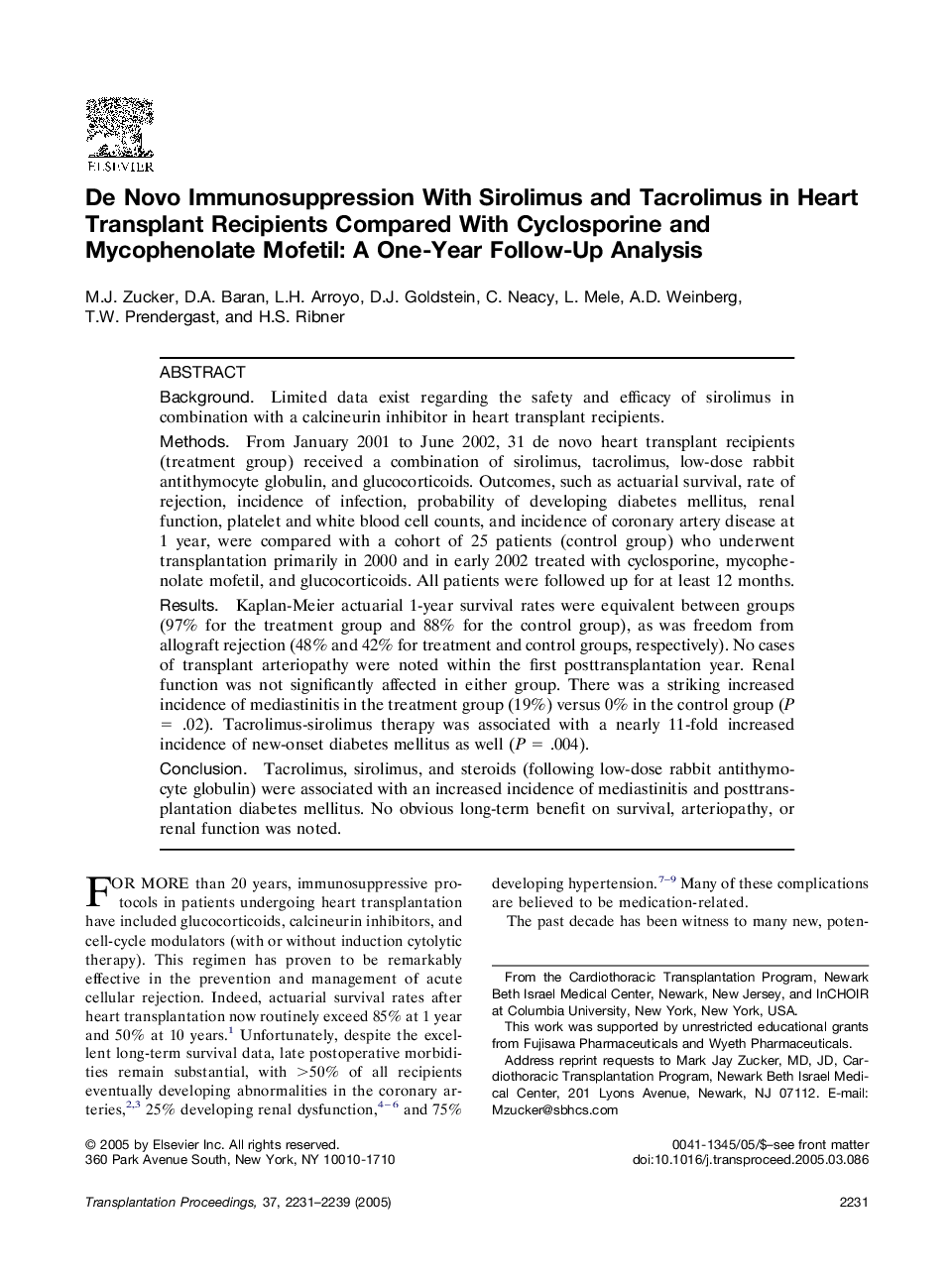| Article ID | Journal | Published Year | Pages | File Type |
|---|---|---|---|---|
| 4264167 | Transplantation Proceedings | 2005 | 9 Pages |
BackgroundLimited data exist regarding the safety and efficacy of sirolimus in combination with a calcineurin inhibitor in heart transplant recipients.MethodsFrom January 2001 to June 2002, 31 de novo heart transplant recipients (treatment group) received a combination of sirolimus, tacrolimus, low-dose rabbit antithymocyte globulin, and glucocorticoids. Outcomes, such as actuarial survival, rate of rejection, incidence of infection, probability of developing diabetes mellitus, renal function, platelet and white blood cell counts, and incidence of coronary artery disease at 1 year, were compared with a cohort of 25 patients (control group) who underwent transplantation primarily in 2000 and in early 2002 treated with cyclosporine, mycophenolate mofetil, and glucocorticoids. All patients were followed up for at least 12 months.ResultsKaplan-Meier actuarial 1-year survival rates were equivalent between groups (97% for the treatment group and 88% for the control group), as was freedom from allograft rejection (48% and 42% for treatment and control groups, respectively). No cases of transplant arteriopathy were noted within the first posttransplantation year. Renal function was not significantly affected in either group. There was a striking increased incidence of mediastinitis in the treatment group (19%) versus 0% in the control group (P = .02). Tacrolimus-sirolimus therapy was associated with a nearly 11-fold increased incidence of new-onset diabetes mellitus as well (P = .004).ConclusionTacrolimus, sirolimus, and steroids (following low-dose rabbit antithymocyte globulin) were associated with an increased incidence of mediastinitis and posttransplantation diabetes mellitus. No obvious long-term benefit on survival, arteriopathy, or renal function was noted.
